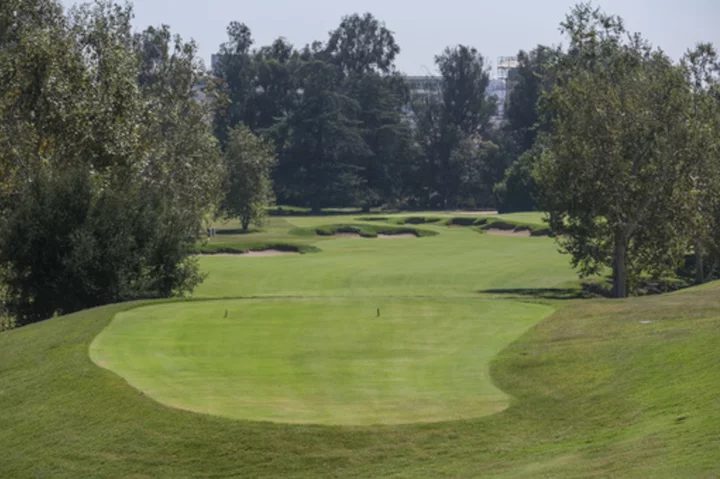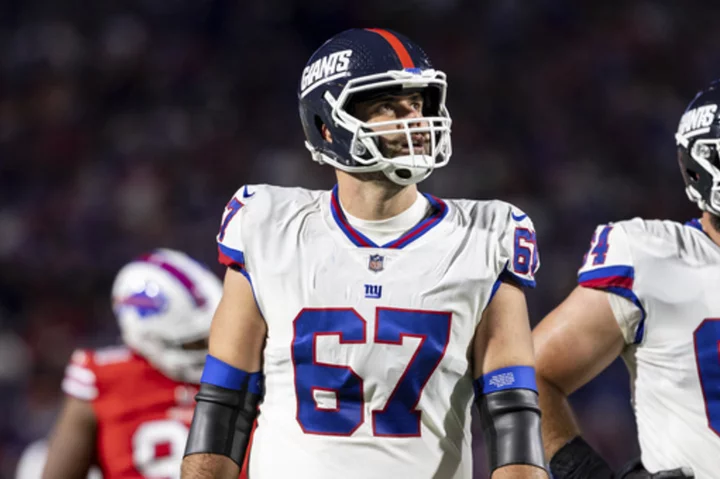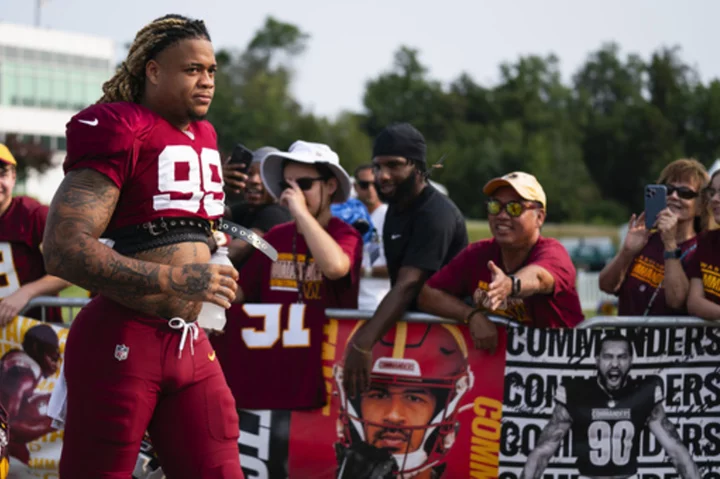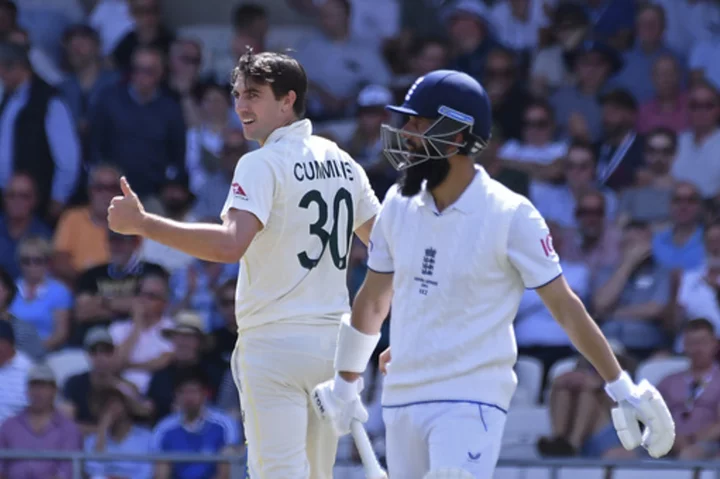LOS ANGELES (AP) — A hole-by-hole look at the North course at Los Angeles Country Club, site of the 123rd U.S. Open that starts Thursday:
No. 1, 590 yards, par 5: For only the third time in the last 20 years, the U.S. Open opens with a true par 5 (Chambers Bay was played as a par 5 and a par 4). This is short by modern standards with a speed slot that can make it seem shorter. The green is protected by a bunker and slopes to the left.
No. 2, 497 yards, par 4: This presents an immediate wake-up call. The fairway slopes to the left toward a bunker. The green is fronted by a barranca that traverses the front nine. Anything in the rough will make a player decide how much to take on to avoid the barranca or missing the green.
No. 3, 419 yards, par 4: The tee shot and the approach are partially blind. The tee shot must avoid barranca to the left. Deep bunkers protect the front of the green, with fingers of grass that could present problems with bunker shots. The large green slopes severely from the back.
No. 4, 228 yards, par 3: The first par 3 is shorter than the yardage because of a 30-foot drop in elevation. Bunkers are front right and back left, but the barranca front the green and could present the biggest challenge.
No. 5, 480 yards, par 4: Palm trees on the horizon indicate the green, which can't be seen from the tee. The fairway is generous but slopes hard to the right, so players will be trying to hit the left side. The green is large and has a large expanse of closely mown turf to the left.
No. 6, 330 yards, par 4: This can be reached from the tee, but the drive is blind over a tree to a shallow green protected by a bunker and barranca short of the green. The safe shot is to the fairway on a hole that turns sharply to the right. That still leaves a precise wedge to the extremely shallow green.
No. 7, 284 yards, par 3: The barranca runs left and then cuts in front of the green, though it leaves ample room for tee shots to land short and run onto the green. A long bunker with fingers of grass lurk along the right side of the green.
No. 8, 537 yards, par 5: Another par 5 that should be easily reachable in two with a good tee shot. The fairway slopes to the right, and two bunkers guard the left side of the fairway. The green is small, and anything left will find a native area that might be more troublesome than a large bunker to the right.
No. 9, 171 yards, par 3: This hole is about 15 to 20 feet higher than the tee box and into the prevailing wind. The green is some 43 yards deep and very narrow, and is flanked by two large bunkers.
No. 10, 409 yards, par 4: The tee shot should avoid a large bunker complex on the right, and the fairway slopes hard to the left. The approach will be a short iron at most, but the green slopes severely to the front and only the upper part of the flagstick is visible.
No. 11, 290 yards, par 3: This is as much about the view of the Los Angeles skyline as the length, which plays shorter because of a 40-foot drop in elevation. The green is protect by three large bunkers, but there is room short and left of the green to land the ball. Anything long runs off a slope and leads to a tough recovery.
No. 12, 380 yards, par 4: The short par 4 starts with a 50-foot slope to a fairway that gets narrow. Two of the largest bunkers on the course protect a green that is some 43 yards wide.
No. 13, 507 yards, par 4: The tee shot crosses a deep valley can't be seen and should be on the left side to avoid the pronounced left-to-right slope. Anything too far right, if it's not in the rough, leave a blind second shot. A bunker is to the right, but it's otherwise closely mown turf that allows for options on a recovery shot.
No. 14, 623 yards par 5: The only par 5 on the back nine, and the longest hole on the course, has out-of-bounds down the right side. A bunker on right requires a 300-yard carry into the prevailing breeze. The green narrows at the front right and is protected by a deep bunker.
No. 15, 124 yards, par 3: The most intriguing of the par 3s because it can play anywhere from 80 yards (count on it) to 145 yards. The narrow green widens at the back, and nearly the entire green is protected by a bunker complex that makes the target look even tinier.
No. 16, 542 yards, par 4: This starts a finishing stretch of par 4s that are a combined 1,554 yards. The tee shot is slightly downhill and the landing zone is framed by a large bunker left and rough on the right. The green slopes from the back. Front pins will require shots landing short and running onto the green.
No. 17, 520 yards, par 4: The barranca returns down the right side of the fairway, and the right side offers the best angle to the green. The bunker complex prominent on the left side starts about 50 yards short of the well-bunkered green.
No. 18, 492 yards, par 4: The closing hole plays uphill and into a prevailing breeze, and the landing area is semi-blind. The best angle is from the right side of the fairway. The green is protected on both sides by bunkers, with the bunker complex on the left starting well before the putting surface.
___
AP golf: https://apnews.com/hub/golf and https://twitter.com/AP_Sports









